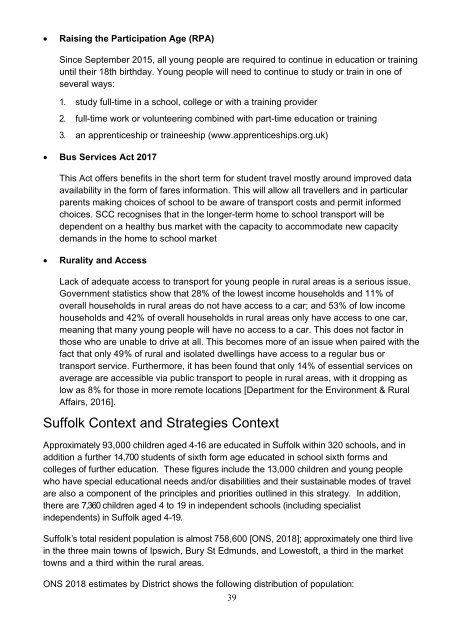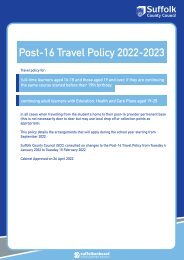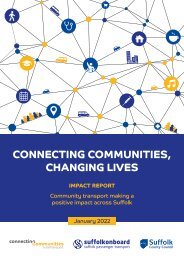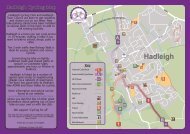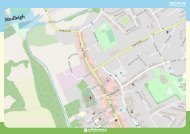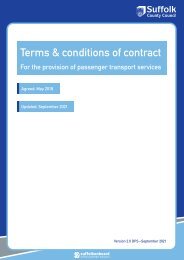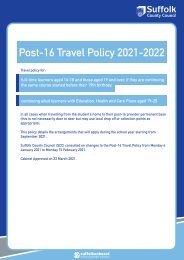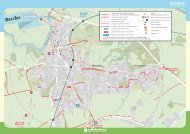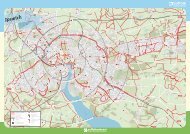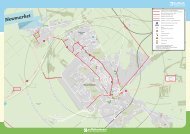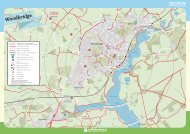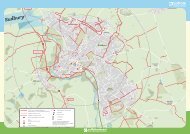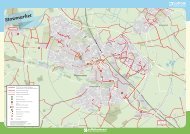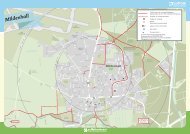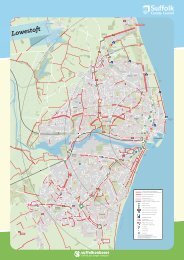SMOT Strategy Document
Create successful ePaper yourself
Turn your PDF publications into a flip-book with our unique Google optimized e-Paper software.
• Raising the Participation Age (RPA)<br />
Since September 2015, all young people are required to continue in education or training<br />
until their 18th birthday. Young people will need to continue to study or train in one of<br />
several ways:<br />
1. study full-time in a school, college or with a training provider<br />
2. full-time work or volunteering combined with part-time education or training<br />
3. an apprenticeship or traineeship (www.apprenticeships.org.uk)<br />
• Bus Services Act 2017<br />
This Act offers benefits in the short term for student travel mostly around improved data<br />
availability in the form of fares information. This will allow all travellers and in particular<br />
parents making choices of school to be aware of transport costs and permit informed<br />
choices. SCC recognises that in the longer-term home to school transport will be<br />
dependent on a healthy bus market with the capacity to accommodate new capacity<br />
demands in the home to school market<br />
• Rurality and Access<br />
Lack of adequate access to transport for young people in rural areas is a serious issue.<br />
Government statistics show that 28% of the lowest income households and 11% of<br />
overall households in rural areas do not have access to a car; and 53% of low income<br />
households and 42% of overall households in rural areas only have access to one car,<br />
meaning that many young people will have no access to a car. This does not factor in<br />
those who are unable to drive at all. This becomes more of an issue when paired with the<br />
fact that only 49% of rural and isolated dwellings have access to a regular bus or<br />
transport service. Furthermore, it has been found that only 14% of essential services on<br />
average are accessible via public transport to people in rural areas, with it dropping as<br />
low as 8% for those in more remote locations [Department for the Environment & Rural<br />
Affairs, 2016].<br />
Suffolk Context and Strategies Context<br />
Approximately 93,000 children aged 4-16 are educated in Suffolk within 320 schools, and in<br />
addition a further 14,700 students of sixth form age educated in school sixth forms and<br />
colleges of further education. These figures include the 13,000 children and young people<br />
who have special educational needs and/or disabilities and their sustainable modes of travel<br />
are also a component of the principles and priorities outlined in this strategy. In addition,<br />
there are 7,360 children aged 4 to 19 in independent schools (including specialist<br />
independents) in Suffolk aged 4-19.<br />
Suffolk’s total resident population is almost 758,600 [ONS, 2018]; approximately one third live<br />
in the three main towns of Ipswich, Bury St Edmunds, and Lowestoft, a third in the market<br />
towns and a third within the rural areas.<br />
ONS 2018 estimates by District shows the following distribution of population:<br />
39


